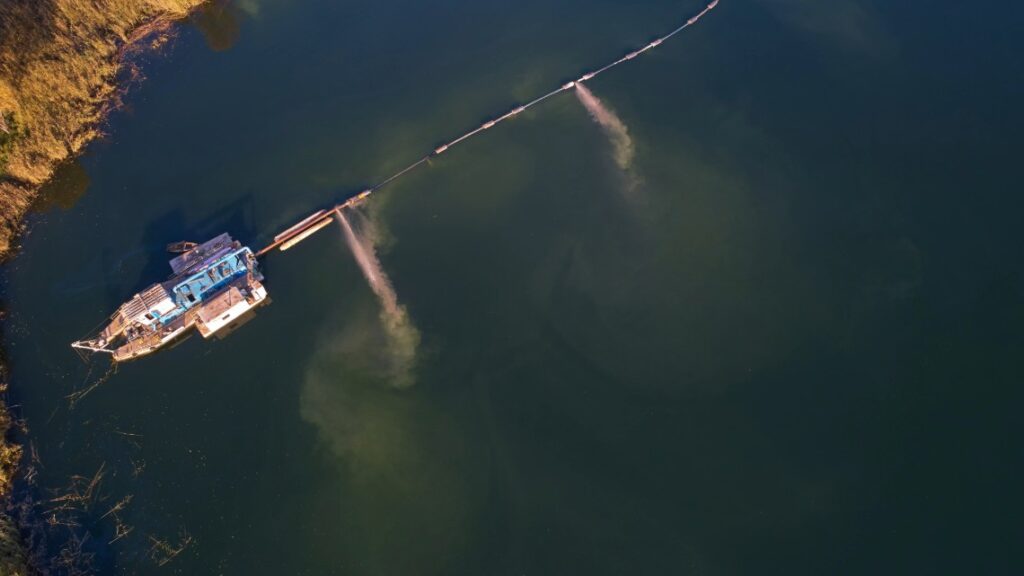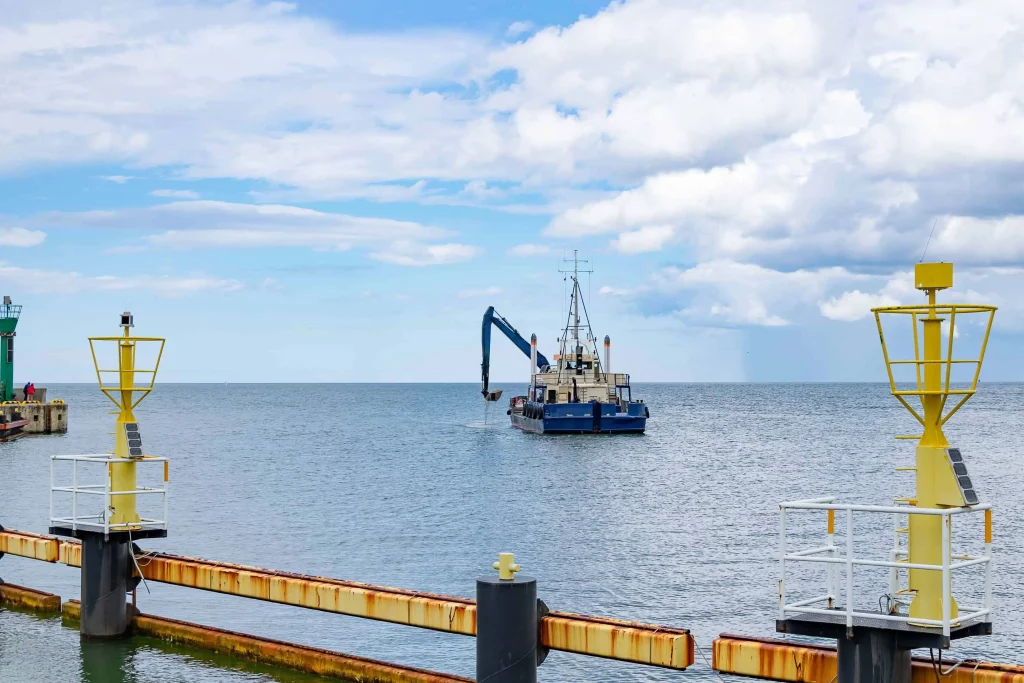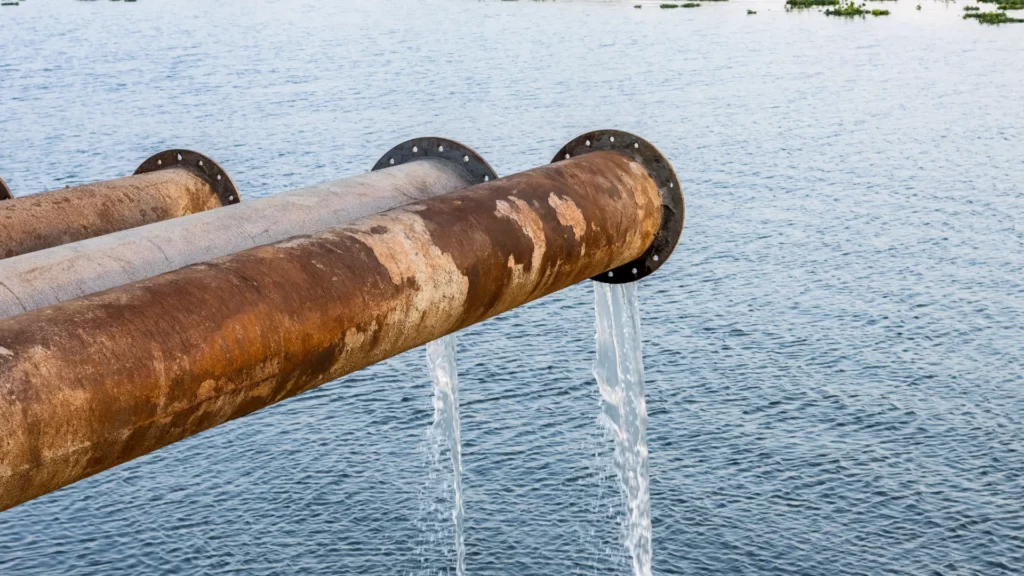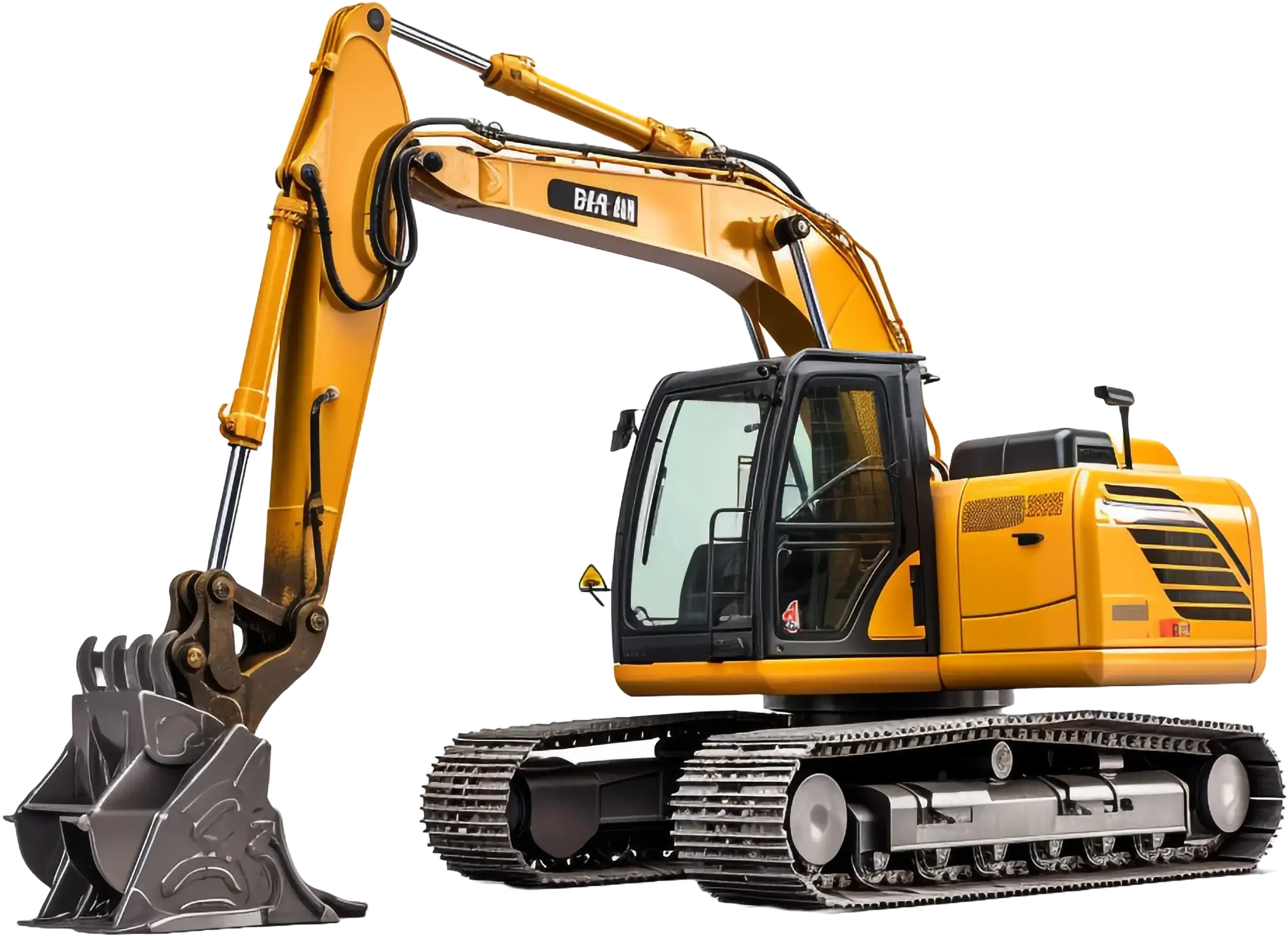A dredge machine is a specialized piece of equipment designed to excavate and remove sediment from the bottom or banks of water bodies, such as rivers, lakes, harbors, and reservoirs. These machines are essential for maintaining navigability, ensuring that waterways are deep enough for ships and vessels to pass. They also play a critical role in improving water quality by removing excess sediment, preventing the build-up of contaminants, and promoting healthy aquatic environments.
The dredge machine performs sediment removal by using either mechanical or hydraulic means. Its primary function is to collect sediments like sand, mud, and silt and transport them to a designated disposal site, which is crucial in industries like construction, environmental remediation, and mining. Dredging also helps in flood prevention, land reclamation, and maintaining the depth of shipping channels to ensure safe navigation.
When considering the dredging machine price, costs can vary significantly based on the machine type, size, and technology used. A sand dredging machine, for instance, tends to have a lower price compared to more complex machines like cutter suction dredgers. However, both types play a vital role in maintaining the efficiency of large-scale dredging projects.
How Does a Dredge Machine Work?
Mechanical Dredging:
Mechanical dredging utilizes large buckets, such as clamshell or grab buckets, or excavators to scoop up sediment from the waterbed. The machine is lowered into the water, where it picks up the sediment and transports it to barges or other disposal vessels. This method is ideal for shallow waters or situations where the sediment is dense or contains large debris that would be difficult to suck up with hydraulic systems.
Efficiency and Application Scenarios:
Mechanical dredging is most efficient when used in projects like port maintenance, river dredging, or construction sites where the sediment is manageable. The dredge machine used for mechanical dredging is typically more affordable and can quickly remove large quantities of sediment, making it suitable for projects where a sand dredging machine is needed, such as in beach restoration, land reclamation, or riverbed cleaning.
Hydraulic Dredging:
Hydraulic dredging uses powerful pumps and pipelines to remove sediment. The sediment is loosened from the seabed using a cutterhead or other mechanical devices, then sucked up and transported through a pipeline as a slurry—a mixture of water and sediment. This method is commonly used in deeper waters or where mechanical dredging would be less effective.
Focus on Cutterhead Operation and Slurry Transport:
The cutterhead, located at the submerged end of the hydraulic dredge machine, rotates to loosen sediment. Once the sediment is loosened, it is sucked up through a high-powered pump and transported via pipelines to a disposal site. This method is ideal for areas that are not accessible with mechanical dredging equipment, especially when dealing with difficult-to-reach sediment layers.
Example: Trailing Suction Hopper Dredgers:
A prime example of hydraulic dredging is the trailing suction hopper dredger, which uses suction arms to draw water and sediment into the vessel’s hopper. These machines are equipped with powerful dredging pumps that can handle large volumes of slurry, making them perfect for large-scale dredging operations. The excess water is discharged back into the waterway, leaving the sediment behind in the hopper.
Real-World Application:
In industries such as construction, mining, and environmental remediation, hydraulic dredging is often preferred for its efficiency in handling a variety of sediment types. For example, a sand dredging machine is commonly used in mining operations to extract sand from riverbeds or coastal regions. Additionally, environmental projects frequently use dredge machines to remove contaminated sediments from water bodies, improving water quality and supporting ecosystem recovery.
Dredging Process: Steps for Efficient Sediment Removal
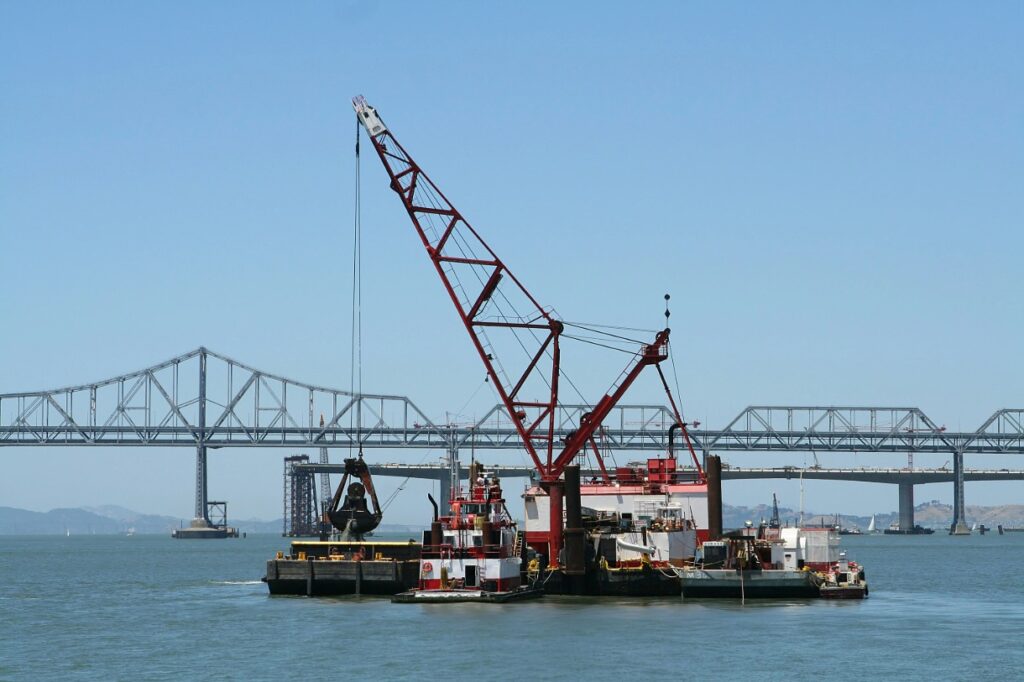
Loosening the Sediment:
The process of dredging begins with loosening the sediment from the waterbed. In mechanical dredging, this is achieved using rotating cutterheads or buckets. The dredge machine is equipped with these mechanical tools to break up compacted sediment layers, making it easier to remove them from the waterbed. The rotating cutterhead, attached to the dredge machine, works by cutting into the sediment and breaking it loose, preparing it for extraction. This method is ideal for shallow areas or locations with dense sediment.
Suction and Extraction:
For hydraulic dredging, the process shifts to the suction and extraction phase. High-powered pumps create a vacuum to draw the loosened sediment, which is then mixed with water to form a slurry. The dredge machine uses a submersible pump to suction the sediment mixture into pipelines for transport. This method is particularly efficient for deeper water and difficult-to-reach areas where mechanical dredging would be less effective. Hydraulic dredging machines, such as those used for sand dredging machines, can effectively extract large volumes of slurry, making them ideal for mining and land reclamation projects.
Transporting Sediment:
Once the sediment is loosened and extracted, it is transported either via pipelines or barges. The slurry is moved through pipelines, which can be extended over long distances to reach designated disposal sites or land reclamation areas. In the case of sand dredging machines, which are used to extract sand, the slurry is transported to nearby shorelines or construction sites, where it can be reused. The dredge machine is crucial for ensuring that the sediment reaches its intended location efficiently and without disruption.
Disposal or Reuse:
After the sediment is transported, the next step involves its disposal or reuse. Sediments removed by a dredge machine can be deposited in designated areas for land reclamation or environmental remediation. In some cases, the sediment is used as construction material or for beach nourishment. The dredging machine price can be a consideration here, as machines that can handle both extraction and transportation over long distances may incur higher costs. However, the ability to reuse sediment for reclamation or as fill material adds significant value to the project, making it a cost-effective solution.
The Benefits of Dredging: Why It Matters
Restores Water Depth:
One of the most critical benefits of dredging is its ability to restore the depth of waterways. Dredge machines are employed to maintain the navigability of harbors, rivers, and shipping channels by removing excess sediment that accumulates over time. This ensures that vessels can pass safely through ports, preventing costly delays due to sediment build-up. The dredging machine price often reflects its capacity to handle large-scale dredging operations, ensuring water depth is restored to the required specifications for commercial and shipping operations.
Prevents Flooding:
Dredging also plays a vital role in flood prevention. By removing excess sediment, dredge machines help increase the channel capacity of rivers and other waterways. This enhanced capacity allows the water to flow more efficiently, reducing the risk of flooding during heavy rains. In urban environments, dredging helps to maintain the proper functioning of stormwater systems and canals, ultimately preventing costly flood damage.
Environmental Remediation:
Dredging is often used for environmental remediation projects. The dredge machine can remove contaminated sediments from water bodies, improving water quality and restoring aquatic ecosystems. For example, sand dredging machines can be used to extract sediments that contain harmful pollutants or excess nutrients. By removing these contaminants, dredging helps restore the health of water bodies, making them safer for wildlife and better suited for recreational activities.
Enables Construction:
Dredging is frequently required for construction projects in water bodies. Whether it’s building piers, docks, or underwater tunnels, dredge machines are essential for preparing a stable foundation for these structures. Removing sediment ensures that the construction site is safe and ready for development, preventing potential issues related to water accumulation or sediment shifting during construction. In these cases, the sand dredging machine is a critical tool for excavation and land preparation.
Expedites Project Delivery:
Dredging plays an important role in expediting the delivery of construction projects. The dredge machine helps quickly remove sediment from waterways or construction sites, enabling the project to progress without unnecessary delays. Faster sediment removal also reduces the overall cost of the project, making it more efficient and cost-effective. Dredging machine price considerations often factor into this benefit, as machines that can handle larger volumes of sediment more quickly can provide a higher return on investment for the project.
The Effectiveness of Dredging: Maximizing Impact with the Right Equipment

Key Factors Influencing Dredging Success:
The success of a dredging project is influenced by several critical factors, including sediment properties, the type of dredger used, and environmental conditions. Sediment properties such as grain size, compaction, and moisture content affect how easily the sediment can be loosened and extracted. For example, fine sands and silts are typically easier to dredge compared to hard-packed clay or gravel, which may require more powerful dredging machines.
The dredge machine type also plays a significant role in determining the efficiency of sediment removal. Mechanical dredgers, such as those using clamshell buckets or grab tools, are suitable for shallower waters with loose sediment, while hydraulic dredgers with submersible pumps excel in deeper waters or areas with denser sediment. Dredging machine price often reflects the capabilities of the dredger to handle various sediment types and depths. Environmental conditions, such as water flow and the presence of underwater obstacles, must also be considered when selecting the appropriate equipment for the job.
Technological Advances:
Modern dredge machines have evolved with technological advancements that enhance their efficiency and reduce environmental impact. Innovations such as GPS-assisted dredging and automated control systems allow for more precise excavation, reducing the risk of over-dredging and minimizing the disruption to the surrounding environment. The integration of energy-efficient pumps and low-emission engines further reduces the carbon footprint of dredging projects. These advancements not only improve the overall performance of dredge machines but also offer long-term cost savings in fuel consumption and maintenance, making them a more sustainable option for large-scale operations.
Moreover, modern sand dredging machines are designed to operate with enhanced productivity and reduced environmental impact. Their specialized pumps and cutting-edge technology allow them to extract large volumes of sand and silt efficiently, reducing the need for frequent maintenance and downtime. By investing in these advanced dredge machines, companies can ensure their dredging operations are both effective and environmentally responsible.
Real-World Application:
A prime example of the effectiveness of modern dredging technology is a recent project completed at a major port facility. The project required the removal of large amounts of sand and silt to maintain navigable depth for shipping vessels. By using a sand dredging machine equipped with the latest dredging technology, the project was completed on schedule, with minimal environmental disruption. The dredge machine employed in this case was capable of handling a variety of sediment types and depths, ensuring efficient and effective sediment removal. Additionally, the use of a modern dredger helped reduce the overall dredging machine price by minimizing operational costs and project delays.
Sand Dredging Machines: A Specialized Tool for Specific Sediments
Explanation of Sand Dredging Machines:
Sand dredging machines are designed specifically for the extraction of sand and silt from bodies of water, such as rivers, lakes, and coastal areas. These machines are equipped with specialized pumps and suction systems that are optimized for handling fine granular sediments. Unlike other dredging machines, which may struggle with loose sand or fine silts, sand dredging machines are engineered to efficiently extract these materials, ensuring minimal disturbance to the surrounding ecosystem.
A sand dredging machine operates by using high-powered pumps to create a suction force that lifts the sediment from the waterbed. The sand is then transported via pipelines or barges to a designated disposal or storage site. This type of dredging is particularly useful in mining operations, where large volumes of sand need to be extracted for construction or industrial purposes. The dredge machine used in these operations is often customized to meet the specific requirements of the job, whether that involves handling highly abrasive sands or working in shallow waters.
Cost Efficiency:
Investing in a specialized sand dredging machine offers long-term cost benefits, especially in mining and construction industries. While the dredging machine price for these specialized machines may be higher upfront, the investment pays off through enhanced operational efficiency and reduced maintenance costs. Sand dredging machines are built to handle large volumes of material with less downtime and fewer repairs compared to general-purpose dredgers. Their ability to work continuously and extract significant amounts of material makes them a highly cost-effective solution for projects that require large-scale sand extraction.
Additionally, specialized dredge machines are often designed for quick setup and operation, allowing for faster project completion times. This not only reduces labor costs but also accelerates the overall project timeline, leading to faster returns on investment. By focusing on the specific needs of sand extraction, sand dredging machines provide a highly efficient and profitable solution for companies involved in mining, construction, and environmental remediation projects.
Key Considerations When Choosing a Dredge Machine

When selecting the right dredge machine for your project, several factors must be carefully evaluated to ensure the equipment meets the specific needs of the task at hand.
Factors to Consider:
- Sediment Type: The type of sediment present is crucial when selecting a dredge machine. For example, soft sands and silts are easier to extract using sand dredging machines, while harder, more compacted sediments such as clay may require more powerful machinery like cutter suction dredgers. Depending on the sediment type, the dredging machine price will vary accordingly, with more powerful machines generally costing more.
- Project Scale: The size and scope of the dredging project also determine the type of dredge machine needed. Smaller-scale projects, such as beach nourishment or shallow water dredging, might only require a smaller, more economical sand dredging machine. Larger-scale projects like deep-water harbor maintenance or land reclamation typically require more robust and capable dredgers that can handle larger sediment volumes efficiently. The dredging machine price for larger equipment will naturally be higher due to its capacity and advanced features.
- Environmental Factors: Environmental conditions, such as water depth, salinity, and flow rates, play an important role in selecting the right equipment. For example, sand dredging machines are designed to operate in a variety of environments, including shallow or coastal regions. On the other hand, machines such as trailing suction hopper dredgers are often used in deeper waters. These environmental factors directly influence the dredging machine price, as machines designed for more challenging conditions are generally more expensive.
Comparison of Different Types of Dredgers:
- Cutter Suction Dredger: A cutter suction dredger is ideal for projects that involve dense, compacted sediment. This type of dredge machine uses a rotating cutterhead to loosen sediment from the waterbed before suctioning it into a pipeline. These machines are highly effective for deep dredging in rivers, harbors, and other water bodies where sediment is more difficult to extract. The dredging machine price for cutter suction dredgers tends to be higher due to the complexity and capability of the machinery. However, their ability to handle tough sediments and deeper waters makes them indispensable for large-scale projects.
- Trailing Suction Hopper Dredger: The trailing suction hopper dredger is designed for larger-scale projects where sediment needs to be removed from deep waters. It uses suction arms to draw sediment into the vessel’s hopper. This dredger is particularly effective for dredging operations in areas like offshore locations, where large volumes of sediment need to be transported quickly. While the dredging machine price for these machines is generally higher than for smaller dredgers, their efficiency and ability to handle large-scale operations make them a valuable investment for long-term dredging projects. The dredging machine price can be justified by the speed and capacity of these dredgers in large projects, ultimately reducing project timelines and costs.
Both types of dredgers have their advantages depending on the nature of the project. Choosing the right dredge machine can significantly impact the overall cost and success of the dredging operation, as well as the dredging machine price paid by the operator.
Optimizing Dredging Operations for Efficiency and ROI
The selection and use of the right dredge machine is essential for the successful removal of sediment in various industries, including construction, environmental remediation, and mining. The benefits of efficient dredging include restoring navigability, preventing flooding, and enabling construction projects, all of which contribute to the overall success of a project. Additionally, modern sand dredging machines offer a cost-effective solution for removing specific types of sediment, improving both efficiency and project timelines.
By investing in the right dredge machine, companies can maximize the return on investment by ensuring faster project completion times, reducing maintenance costs, and increasing productivity. The dredging machine price is an important consideration, but it must be weighed against the long-term benefits of reduced operational costs and improved project delivery times. Dredging machine price should not only reflect the upfront cost but also the potential for increased efficiency and reduced operational costs over the machine’s lifecycle. Contact Dredge Works Mali for expert advice on selecting and operating the best dredge machine for your project needs. Our team can help you find the most efficient and cost-effective dredging solutions to ensure the success of your project, all while considering the right dredging machine price for your budget.

